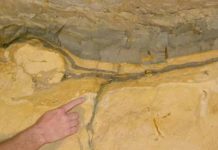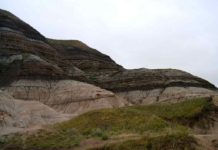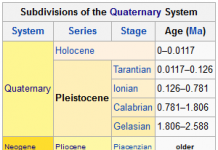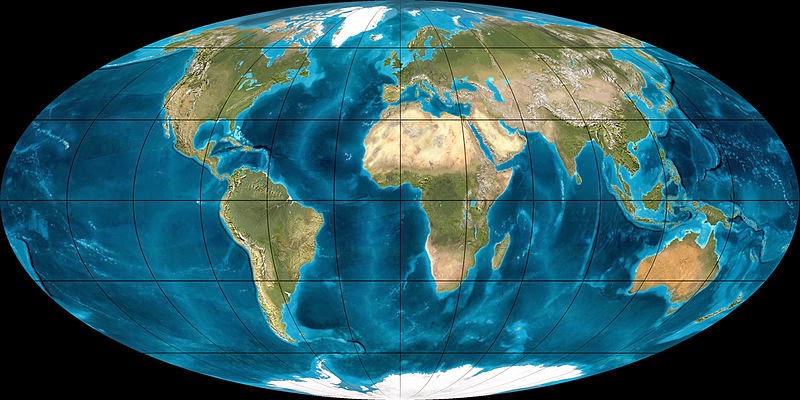
The Quaternary Period /kwəˈtɜrnəri/ is the most recent of the three periods of the Cenozoic Era in the geologic time scale of the ICS.It follows the Neogene Period and spans from 2.588 ± 0.005 million years ago to the present. Traditionally it was preceded by Tertiary which is no longer recognized as a formal geological unit but is still in colloquial use.
This relatively short geological period is characterized by a series of glaciations and by the appearance and expansion of anatomically modern humans.
- Also of note, all objects that are suitable for carbon dating are enclosed in this period.
- The Quaternary includes two geologic epochs: the Pleistocene and Holocene.
Research history
The term Quaternary (“fourth”) was proposed by Giovanni Arduino in 1759 for alluvial deposits in the Po River valley in northern Italy. It was introduced by Jules Desnoyers in 1829 for sediments of France’s Seine Basin that seemed clearly to be younger than Tertiary Period rocks.
The Quaternary Period follows the Neogene Period and extends to the present. The Quaternary covers the time span of glaciations classified as the Pleistocene, and includes the present interglacial period, the Holocene.
This places the start of the Quaternary at the onset of Northern Hemisphere glaciation approximately 2.6 million years ago. Prior to 2009, the Pleistocene was defined to be from 1.805 million years ago to the present, so the current definition of the Pleistocene includes a portion of what was, prior to 2009, defined as the Pliocene.
Quaternary stratigraphers usually worked with regional subdivisions. From the 1970s, the International Commission on Stratigraphy (ICS) tried to make a single geologic time scale based on GSSP’s, which could be used internationally. The Quaternary subdivisions were defined based on biostratigraphy instead of paleoclimate.
This led to the problem that the proposed base of the Pleistocene was at 1.805 Mya, long after the start of the major glaciations of the northern hemisphere. The ICS then proposed to abolish use of the name Quaternary altogether, which appeared unacceptable to the International Union for Quaternary Research (INQUA).
In 2009, it was decided to make the Quaternary the youngest period of the Cenozoic Era with its base at 2.588 Mya and including the Gelasian stage, which was formerly considered part of the Neogene Period and Pliocene Epoch.
Geology
The 2.6 million years of the Quaternary represents the time during which recognizable humans existed. Over this short time period, there has been relatively little change in the distribution of the continents due to plate tectonics.
The Quaternary geological record is preserved in greater detail than that for earlier periods.
The major geographical changes during this time period included the emergence of the Strait of Bosphorus and Skagerrak during glacial epochs, which respectively turned the Black Sea and Baltic Sea into fresh water, followed by their flooding (and return to salt water) by rising sea level; the periodic filling of the English Channel, forming a land bridge between Britain and the European mainland; the periodic closing of the Bering Strait, forming the land bridge between Asia and North America; and the periodic flash flooding of Scablands of the American Northwest by glacial water.
The current extent of Hudson Bay, the Great Lakes and other major lakes of North America are a consequence of the Canadian Shield’s readjustment since the last ice age; different shorelines have existed over the course of Quaternary time.
Climate
The climate was one of periodic glaciations with continental glaciers moving as far from the poles as 40 degrees latitude. There was a major extinction of large mammals in Northern areas at the end of the Pleistocene Epoch. Many forms such as saber-toothed cats, mammoths, mastodons, glyptodonts, etc., became extinct worldwide. Others, including horses, camels and American cheetahs became extinct in North America.
Quaternary glaciation
Glaciation took place repeatedly during the Quaternary Ice Age – a term coined by Schimper in 1839 that began with the start of the Quaternary about 2.58 Mya and continues to the present-day.
Last glacial period
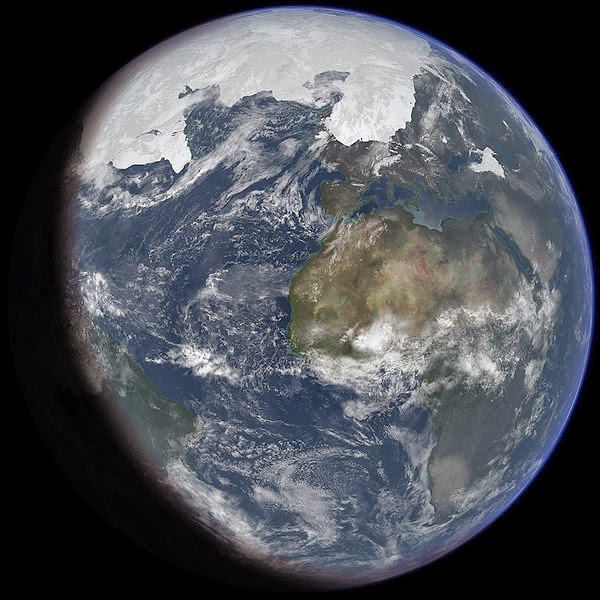
In 1821, a Swiss engineer, Ignaz Venetz, presented an article in which he suggested the presence of traces of the passage of a glacier at a considerable distance from the Alps. This idea was initially disputed by another Swiss scientist, Louis Agassiz, but when he undertook to disprove it, he ended up affirming his colleague’s hypothesis. A year later, Agassiz raised the hypothesis of a great glacial period that would have had long-reaching general effects. This idea gained him international fame and led to the establishment of the Glacial Theory.
In time, thanks to the refinement of geology, it has been demonstrated that there were several periods of glacial advance and retreat and that past temperatures on Earth were very different from today. In particular, the Milankovitch cycles of Milutin Milankovitch are based on the premise that variations in incoming solar radiation are a fundamental factor controlling Earth’s climate.
During this time, substantial glaciers advanced and retreated over much of North America and Europe, parts of South America and Asia, and all of Antarctica. The Great Lakes formed and giant mammals thrived in parts of North America and Eurasia not covered in ice. These mammals became extinct when the glacial period Age ended about 11,700 years ago. Modern humans evolved about 190,000 years ago (source: Leakey). During the Quaternary period, mammals, flowering plants, and insects dominated the land.
Note : The above story is based on materials provided by Wikipedia


